
















The Farming Families is distributed free exclusively to the farmers, ranchers and producers in rural Sioux, Plymouth and Lyon Counties. All rights reserved. Content in this magazine should not be copied in any way without the written permission of the publisher. The Farming Families assumes no responsibility for unsolicited manuscripts or photographs. Content in articles, editorial
advertisements are not necessarily endorsed by The
From birthcare to urgent care ... pediatrics to geriatrics ... screenings to surgeries … we offer the right care at the right place at the right time.


Orange City Family Medicine:712-737-2000
Orange City Family Medicine: 712-737-2000


Hospers MedicalClinic:712-752-8800
Hospers Medical Clinic: 712-752-8800
MillCreek Family Practice:712-448-2000
Mill Creek Family Practice: 712-448-2000
Orange City Walk-In Clinic:712-707-6070
Orange City Walk-In Clinic: 712-707-6070
Hospital/Emergency Room:712-737-4984
Hospital/Emergency Room: 712-737-4984
Safe family medicine clinics in three communities, plus Walk-In Clinic and Emergency Medicine in Orange City.
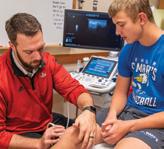
Skilled family doctors, nurses, surgeons, therapists, urgent care and emergency medicine providers, and support staff.
Essential health and well-being services, screenings, and medical care for every stage of life ... every day.


Determination Dairy Inc. was the name Phil Kleinhesselink and his father, Ken, chose when Phil returned to the farm after 12 years of turning wrenches for area implement dealers. Phil and his wife, Jeanne, didn’t know how important determination would become in their life together.

The couple had moved into a doublewide trailer on the farm several months before he and his dad added cows to the herd. In February 1992, two weeks after the new cows arrived, Ken was unexpectedly
diagnosed with cancer. They were planning to build a freestall barn and Dad told Phil to “keep going.” Ken passed away in November that same year. That was not the sort of generational transition they were hoping for.
Setbacks were nothing new for the Kleinhesselink family. Ken lost his right arm in a 1963 power takeoff accident. He was determined to keep farming and adapted the dairy by installing a pipeline system. Phil was only 1½ years old when the accident happened, so he never knew
The milk cows are long gone, but the old corporate name symbolizes the ongoing attitude at the Kleinhesselink farm near Alton.Logan and Danielle Kleinhesselink, their daughters Wren and Zoey, and Jeanne and Phil Kleinhesselink.
his dad any other way. When Phil was nine, his mother, Harriett, lost an eye when a silo’s unloader crank didn’t catch properly. (Over the years, the family also had a oneeyed dog and a three-legged dog. Their pets were just as determined to keep going as the owners! Later the family had a dog who howled along to the radio – but only when Garth Brooks’ “Ain’t Goin’ Down Til Sun Comes Up” played.)
Phil credited Jeanne’s late father, Lee Woudstra of Hospers, for helping them find their way through the tough times when Ken passed away. “He was a very good mentor. A lot of advice came from him,” Phil said. Lee and Mary Woudstra were dairy producers themselves. Jeanne grew up learning to milk in buckets, but “I never learned to milk pipeline because if I learned how, I'd have
a neighbor who was building up his Jersey herd and we were half Jersey. So we sold on contract and, despite the bank being very
for another producer. The cows arrive in February and some of stock leaves in May, while others are moved to the family’s pasture. When






they always make that much noise?”
In her off-farm career, Jeanne has shown her own type of determination as a nurse and nurse practitioner. She’s always been bent on self-improvement. She started with a degree in nursing in 1982, then earned a bachelor’s followed by a master’s as a nurse practitioner and a doctorate of nursing practice. About five years ago, she added a post-master’s certificate for psychiatric mental health, continuing in a new role at Sioux Center Health (see sidebar story on page 10).
14 WELDING
Phil and Jeanne have two sons, Tony and Logan. Tony is an instrumentation technician at Royal Canin, a pet food manufacturer in North Sioux City. Logan lives on the farm, where he owns and operates 14 Welding.

Logan took some welding and machining classes in high school before going on to Western Iowa Technical College. But the best
learning experience was when he and Tony went with a family friend to add a 1,100-foot freestall to a dairy in Nebraska. In addition to learning a plethora of hands-on skills in construction, welding, plumbing and more, they also learned about the construction life. They learned life lessons by others’ mistakes.
Most of Logan’s work is in agricultural repair and retrofitting. For example, if a hog producer is installing wet/dry feeders, many will want to use existing gates, so he makes the parts to make the new feeder fit. He fixes feeder wagons and does a lot of repair and retrofitting in feedlots. He makes replacement and one-off parts on his plasma table. He’s done oddball jobs like adapting a stump grinder into a vibrating plow. A local scrap yard calls on him frequently to fix its car crusher. He’s a jack of all trades. His wife, Danielle, came up with the company name, 14 Welding. The numeral “14” substitutes for the 14 letters in their last name.
According to Logan, “Say you call to order parts, by the time you get done explaining how to spell Kleinhesselink, you forget why you called them. It’s easier to say ‘14 Welding’ and move on to get your parts ordered.”
Danielle is a native of Hospers and is a kindergarten teacher for the MOC Floyd Valley School District. Jeanne said, “Danielle is the most bubbly person. I just absolutely adore her. She's just perfect for the little people in kindergarten. And we’re so blessed to have our grandchildren 350 feet away.”
Danielle introduced herself as the “next door neighbor.” She and Logan, and their daughters Zoey (5) and Wren (1½), live in Phil and Jeanne’s former house. Phil and Jeanne built a new house on the same acreage, although they are out of sight from each other with machine shops and trees located between.
Danielle has learned a lot since moving to the farm. She’s glad that Zoey and Wren are curious and along for the lessons. “Just the other day, we were talking about the facts of death, just because you see it so much more on the farm between the cats and the cows. Growing up on a farm, you learn about so many things that you just assume are normal and that everybody should know.”
When Logan and Danielle were first dating in 2012, the family jokingly called her “The Distraction.” Phil said he and his son got a lot more work done on “The Project” before “The Distraction” pulled Logan’s attention away.
So, what is “The Project”?
The Project is a 185 White tractor with a Cummins purchased in 2010
at Carthage, Missouri. “We should probably have left 98 percent of it behind for as much of the original tractor we used,” Logan said. But Phil said the original parts served their purpose by guiding designs and patterns drawn onto pizza boxes. Combining Phil’s expertise in tractor engine maintenance and repair with Logan’s skill in welding and CNC solutions, “The Project” became “Doctor’s Order’s,” a competitor in the Light Super Stock Class on the prestigious Outlaw Truck & Tractor Pulling Circuit. They’re proud that Doctor’s Orders is built by their own determination, ingenuity, and blood, sweat and tears. Father and son live by the words of Phil’s dad, “You can’t fail if you don’t try.”

Phil’s only disappointment in the current division of duties is he doesn’t get to weld. “Logan won’t let me weld anymore. He took that away from me. My welds will hold, but they just ain’t pretty enough according to him.”
Ninety percent of a tractor pulling enterprise happens in the shop, Phil said. “There’s pride in knowing we built this ourselves and it held together.” The blast of smoke, the spinning tires, the roar of crowd and the explosion down the track is an adrenaline rush, he said. It’s the icing on the cake of a project well done.

In February, Jeanne had open heart surgery to repair severe mitral valve regurgitation. Her heart was working too hard to pump enough blood to the body. The extra effort causes the left lower heart chamber (ventricle) to get bigger. Untreated, the heart muscle becomes weak, which can cause heart failure. Strangely enough, Phil and the surgeon could discuss the problem in a similar dialect. They found parallels between how the heart pumps blood to power the body and how an engine
pumps fuel to power a car’s movement. The doctor said medical meeting mechanical made for a smooth consultation.



Jeanne admitted she was probably in denial about the severity of the problem. After surgery, her attitude was “I had a broken part and they fixed it and I'm good to go.” Finally, two months after the surgery, she read the operation report and discovered how sick she really had been.
The doctor asked her to start her recovery by walking six minutes, six times a day. Determined to expedite her recovery, she started walking seven minutes, six times a day. Her doctor pushed back a little. But Jeanne didn’t let up. By the next week, she was walking 15 minutes, four times a day. Danielle said, “She rocked that recovery.”
Providing




Farmers who are experiencing depression, anxiety, addiction or other behavioral issues need to remember they are not alone. According to Sioux Center Health’s Jeanne Kleinhesselink, “Farmers are so darn independent and stubborn. They feel like they're the only person who's ever had to go through this. Because they're so independent, they want to fix it themselves, and so some just self-medicate with alcohol. It's really easy to sit in the shop and just drink because then ‘I don't have to deal with my problems.’”
Close-knit rural communities can be a blessing and a curse related to mental health issues. On one hand, close family and friends might recognize symptoms of concern, but there’s also the stigma of “everyone knows everybody’s business” in a small town.
Generally, health providers are in short supply in rural America and rural Iowa. But local farm families have an advantage because there are many nearby hospitals and clinics. Nurse practitioners such as Kleinhesselink, along with physician assistants and therapists, play a vital role in the mental health safety net. Primary care providers at Sioux Center Health regularly conduct screening tests for anxiety and depression with all patients. Spouses, relatives or friends who notice one or several of the following symptoms should ask questions of the individual, express concern and encourage them to visit a health care provider.
• Avoiding friends or beloved activities.
• Feelings of hopelessness.
• Trouble sleeping or excessive sleeping.
• Low energy or loss of motivation.
• Lost appetite or binge-eating.
• Difficulty with concentration.
• Suicidal thoughts or tendencies.
Early intervention can often prevent downward spirals. There are no hoops to jump through to get connected with help at Sioux Center Health. The direct number to its behavioral health department is 712-722-8222. “You don’t have to talk to three different people to get to our department,” she said. A positive side effect of the pandemic was telehealth became more available. “Telehealth allows us to reach people who are unwilling or afraid to come into the clinic.”
Jeanne Kleinhesselink
The national Suicide and Crisis Lifeline provides 24/7, free and confidential support for people in distress by dialing 988. “You got a warm person on the other end of the line that's going to talk to you and determine if they can help talk you down or if they need to direct you to the emergency room.” The National Alliance on Mental Illness (www.nami.org) is also a great resource and has a local peer support group, she said.
Jeanne Kleinhesselink felt called to enter the field of mental and behavioral health after there were three suicides in the area in the summer of 2016. “God calls us to different vocations and I felt that I was called.” She told her husband, Phil, “Somebody’s got to do something.” Phil’s response: “You’re going back to school again?” Yes, Jeanne was headed back to class. Self-improvement in her chosen field of nursing has been an ongoing marker in Jeanne’s career. Following on her nursing degree from St. Luke’s in 1982, she subsequently earned a bachelor’s in 1987; a master’s as a nurse practitioner in 1994; and a doctorate of nursing practice in 2012. Finally, in 2018, she earned a post-master’s certificate for psychiatric mental health. The 11 letters behind her name are DNP, PMHNP, FNP –not quite equaling the 14 letters in her last name. She’s been with Sioux Center Health for 27 years.
YOUR HOME & OPERATION TO FIBER TODAY








At Premier, we know the importance of fast, reliable connections. That’s why when we install fiber optics, we don’t just bring the connection to your home. We will also bring fiber to your hog and dairy barns, shops, and accessory buildings. Get your home and operation up to speed with access to fiber and the best services from Premier Communications.

When the American Civil War began, there were maybe one or two white men living in what would become Lyon County, Iowa. Yet, even before true settlement of the county began in the early 1870s, the county had an everlasting connection to the War Between the States.
Administratively, Lyon County was originally part of Woodbury County. When the legislature created the state’s most northwestern county, they named it Buncombe. But it was re-named Lyon County in 1862, in honor of an early hero in the Civil War.
General Nathaniel Lyon was the first Union general to be killed in the war. He was known for his actions in 1861 which helped to prevent border state Missouri from joining the Confederate States. As commander of the Union arsenal at St. Louis, Lyon became suspicious of Missouri Gov. Claiborne Jackson. His worries proved to be warranted: Jackson was secretly in league with Confederate President Jefferson Davis to have Missouri secede and join the other rebel states. Lyon forced the surrender of the pro-Confederate state militia. He was given command of Union troops in Missouri and was killed in action at the Battle of Wilson’s Creek on August 10, 1861. Many troops from Iowa were part of this battle.
The Iowa Legislature recognized General Lyon the next year by naming Lyon County in his honor.
While still a young and sparsely populated state, Iowa aided in the ultimate Union victory by providing food and other supplies. Of special note is Iowa contributed more troops per capita to the Union Army than any other state. Iowa’s population at the time was about 675,000 and it provided more than 10 percent of its population – 76,534 men – for military service. Thirteen thousand Iowans died and another 8,500 were severely wounded.
Iowans fought in battles at Pea Ridge, Fort Henry, Fort Donelson, Shiloh, Chattanooga, Chickamauga, Vicksburg and Missionary Ridge. They also marched with Sherman through Atlanta. General Sherman liked the Iowa boys “cause they knew how to forage for food and took long strides when they marched.”
Ultimately, Iowa sent 44 infantry regiments, four artil -
lery batteries, nine cavalry regiments and the First Iowa Infantry African Descent (which became the 60th U.S. Colored Infantry). More than 800 enlisted in the Navy and Marines. Clothed in wool uniforms, soldiers were paid $13 per month, but were paid on a quarterly basis.

After the Civil War, Lyon County was the least settled area of the state and consequently its available land proved to be a draw for several dozen veterans. At least 41 Union veterans lived in Lyon County. The war and post-war experiences of one of those veterans is well documented.* Washington Walker Gardner enlisted at Dubuque in 1861 and was appointed company clerk. He was promoted to corporal, sergeant, first lieutenant and, finally, captain. He fought in the Battle of Vicksburg and, after the battle, was the only sergeant left alive in his company. In May 1864, Gardner was made first lieutenant and was assigned to the command of Company A in the 100th Colored Infantry. In the Battle of Nashville, his brigade lost more than 50 percent of its men. Gardner served more than four years, often in the midst of bloody battles, yet never was wounded.
In August 1880, Gardner moved to Rock Rapids, where he built the first grain warehouse on the line of the Chicago, St. Paul, Minneapolis & Omaha railroad. He became a prominent dealer of grain, fuel and farm machinery; and built elevators at Doon, Ash Creek, Lester and Larchwood. He was long active in the Grand Army of the Republic and a commander of GAR Dunlap Post, No. 147, Department of Iowa. He died on April 29, 1913, and is buried at Riverview Cemetery in Rock Rapids.
Other Civil War veterans who lived in Lyon County included:
• Arne Arneson. Died November 13, 1895. Buried in Larchwood Cemetery.
• Alexander Brown. Died June 18, 1903. Buried in Larchwood Cemetery. He served over three years in Company A, Fifth Iowa Infantry.
• William Brown. Inwood.
• Otis Castle. Inwood.
• B.V. Crane. Died May 1916. Buried in Larchwood Cemetery.
• Henry Damon. Lester.
• Henry Donnelly. Alvord.
• Chris Erickson. Inwood.
• Johan Feldmann Sr. Died Aug. 15, 1917. Buried at Evergreen Lawn Cemetery in George.
• Casper Fischer. Died Jan. 9, 1908. Buried at Larchwood Cemetery.
• William Fricceus. Died May 8, 1882. Buried at Larchwood Cemetery.
• John Fry. Inwood.
• D.C. Garver. Inwood.
• Arne Helgesen.
• John Herbst. Served under General Sherman. Died Dec. 27, 1925. Buried in Larchwood Cemetery.
• G. Hodgson. Inwood.
• George M. Holliday. Served in Company B of the Minnesota Infantry.

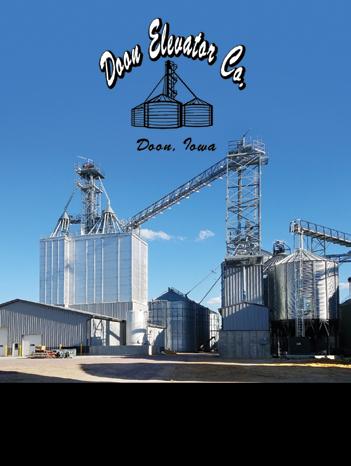
• William Horsfall. Died in Sioux Falls on Sept. 9, 1920. Buried at Evergreen Lawn Cemetery in George.

• George Jones, Inwood.
• E.W. Lewis. Served in Company D, 124th Pennsylvania. Died Sept. 19, 1903. Buried at Larchwood Cemetery.
• Ed McMullen. Alvord.
• Charles Meesner. Lester.
• Robert Herman Mills. Served in 6th Kansas Cavalry. Died March 4, 1901. Buried at Evergreen Lawn Cemetery in George.
• Henry Naugle. Died Oct. 12, 1922. Buried at Larchwood Cemetery.
You can be confident knowing we're here for you every step of the way. Count on us for all of your coverage needs. Trust in Tomorrow.®

Contact us today.
712–722–2243
• Patrick “Frank” O' Connell. Died May 12, 1920. Buried at Larchwood Catholic Cemetery
• William Pruitt. He served four years in the 50th Indiana Infantry. Five of his brothers also served. Buried at Larchwood Cemetery.
• Eugene W. Ripley. Died Aug. 29, 1920. Buried in Evergreen Lawn Cemetery at George.
• Sam Satterlee. Buried in Evergreen Lawn Cemetery at George.
• Lewis S. Sayre. Died in 1926. Buried at Larchwood Cemetery.
• Amos Severson. Inwood.
• William Shatters. Buried at Larchwood Cemetery.
• Patrick Solon. Enlisted in the army at age 17. Died April 7, 1920. Buried at Larchwood Cemetery.
• Ole Sorenson. Inwood.
• Nathan Spencer. Died April 28, 1917. Buried at Larchwood Cemetery.
• T.W. Tettershall. Beloit.
• Thieis Tobiason. Inwood.
• Janes Tracy. Died Sept. 22, 1921. Buried at Larchwood Cemetery.

• William Van Valzah. Died 1908. Buried at Larchwood Cemetery.
• William J. Webber. Served in Company E, 30th Regiment, Wisconsin Infantry. Died Oct. 24, 1889. Buried in Larchwood Cemetery.
Ironically, the last living Civil War veteran in Lyon County shared his last name with the county. George W. Lyon was born Jan. 27, 1840, in Bellefonte, Pennsylvania. He died at age 100 on Feb. 2, 1940, in Inwood. He is buried at Richland Cemetery.
*Find a detailed account of Captain Gardner’s Civil War experiences at www.findagrave.com/memorial/41537669/washington-walker-gardner.
Sources
• iagenweb.org/lyon/military/civilwar.htm
• ouriowaheritage.com
• findagrave.com
• newspapers.com
• Sons of Union Veterans of the Civil War, Iowa Department. iowasuvcw.org
• Wikipedia.com.

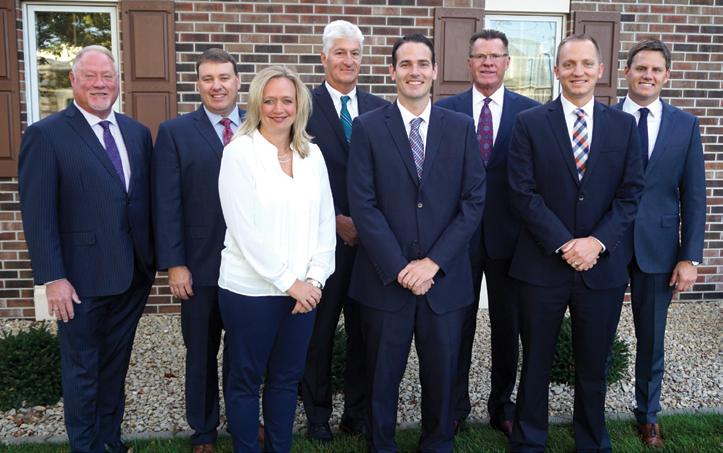

 WILD FLOWERS AT SUNSET.
PHOTO BY BRETT DAVELAAR, BD PHOTOGRAPHY
WILD FLOWERS AT SUNSET.
PHOTO BY BRETT DAVELAAR, BD PHOTOGRAPHY
Kevin and his wife, Cari, own Knapp Time Dairy, which is located north of Lester. “We probably are too meticulous. But, in my opinion, to do something average in this day and age is to be broke,” he said. “Let’s face the facts … to make it as a dairyman today – big or small, it doesn’t matter – you need to be the best of the best or you’re out. It’s cutthroat, the margins are very thin, very slim.”
Cari grew up on her family’s dairy farm in nearby Ellsworth, Minnesota. Her family milks Holsteins, while Knapp Time milks Jerseys. “I’ve tried not to hold it
against her,” Kevin joked. Cari studied dairy science at South Dakota State University and, for two years after graduation, was the herd manager of an operation near Crooks, South Dakota. Cari’s advanced education, experience on her parents’ farm and as a herd manager complement her husband’s education via the school of hard knocks.
Kevin got his start in an entirely different fashion in Congerville, Illinois, a village located between Peoria and Bloomington. Growing up, he worked during the summer for local grain and beef farmers
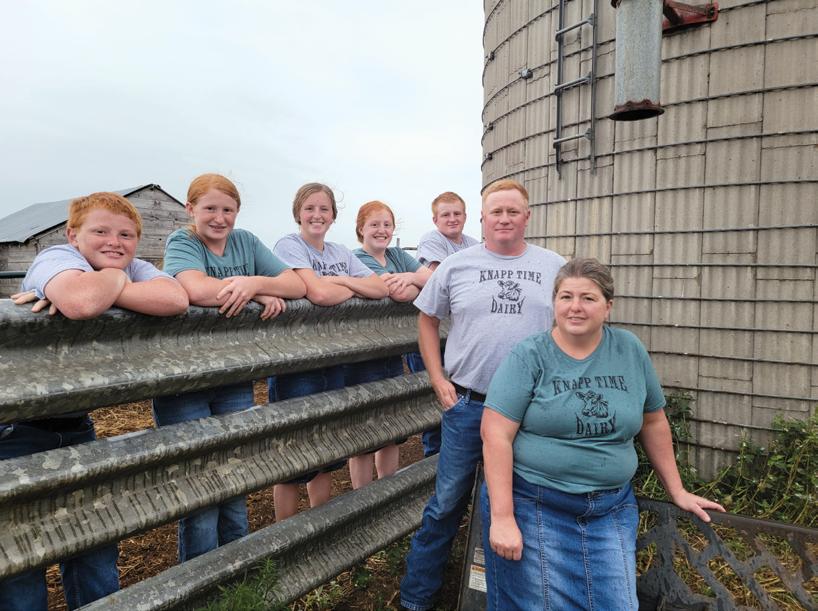
who were like family. When he was a freshman in high school, he started working for a local dairyman named Larry Musselman.
“He gave me my first opportunity to milk. With the way he cared for his cows and his whole mentality, Larry was an important mentor in my life and really instilled the love of dairying into me.”
After four years at the Musselman dairy, he went to work for another dairy located an hour north of home. Determined to be a farmer, Kevin decided milking was the best way for a town kid to get started.
“Building on those six years, I went
Kevin Knapp has always believed in doing things right. “We’re not going to work this hard and do something halfway.”Kevin and Cari Knapp with their children along the fence: Logan, Erica, Angie, Tara and Nathan. Photos by Catherine Lefdal.
to the bank with a business plan and told them, ‘Hey, 30 days from now I can start making payments back to you.’” He started with only 13 cows while working fulltime grinding feed for a neighboring pork producer.

Kevin and Cari met through their connections in the Apostolic Christian Church. They married in 2002 and lived in Illinois for about a year-and-a-half. With Cari’s family connections in southern Minnesota and the fact that dairies and dairy infrastructure were vanishing in central Illinois, it made sense to look at northwestern Iowa as a new home. They purchased a dairy site in need of some tender loving care and moved their small herd to Lyon County. “We were young and it was a big step in life,” he said.
Before they moved, they hired Marlyn Debuhr, a dairy equipment dealer and friend of Cari’s family, to get the place up and operational so Knapp’s could unload their cows and get started milking right away. Kevin said Marlyn (who is now retired) was the last of a breed of lone wolf, independent equipment dealers who went above and beyond to help them get on their feet. He remains a family friend 20 years later.

While Knapp’s have some hired help, “The elbow grease behind it is our family,” said Cari. The couple has five children, all of whom get their hands dirty working in the dairy.
Nathan, 20, is enrolled in the diesel mechanics program at Southeast Technical College in Sioux Falls. In addition to being fulltime at the dairy, he worked this summer for a local auto mechanic. Tara, 18, graduated from West Lyon High School this past spring. She’s pursuing a degree in medical sonography at Southeast Tech, works as a certified nursing assistant at the nursing home in Hills, and helps in the dairy when she’s home.
Angie, 16, is a junior at West Lyon and helps with the milking.

Erica, 14, is a freshman and is the farm’s “calf care lady.” Logan, 12, is in 7th grade. Logan also works in the dairy, though sometimes it’s with reluctance since it’s hard to have an older brother who often is in charge.
According to Cari, “We value raising our kids on a dairy farm. They’re learning a work ethic second to none.” Kevin agreed: “Have they had to work too hard? Yeah, admittedly, they have. But they’ll meet the rest of their life head on, tackling challenges that come their way. It gives them problem solving skills, a work ethic and responsibility.”
Nathan played football in high school, and Angie and Tara ran track and cross country. But all five of them have shared a passion for showing dairy cows at the Lyon County Fair. Many years, they’d hardly get the cows unloaded from the fair and the kids would be talking about and planning for next year’s show.



“My wife and our oldest daughter don't like to milk with me because they say I'm just way too slow,” Kevin said. “It's been a lifelong learning experience for me to slow down and enjoy what I’m doing. If I'm going at the pace I like, then I'm having fun and enjoying it. If you’re going out to the barn twice a day, 365 days a year and doing it as fast you can, you’re going to burn out. It’s going to be too much. You're going to be short tempered with the people working around you, and you're going to be short tempered with the cows. I mean cows don't like to be pushed and women don’t like to be pushed, so you just might as well take your time with both of them.”
Kevin believes the pace he’s set is good for both the human crew and the Registered Jersey herd. Milk production levels have continued to climb for years at Knapp Time Dairy.


















The daily pace in the barns is also reflected in the consistently steady, slow approach to expanding the herd. By today’s standards, it remains a very small operation, but also one with an enviable level of production.
Nathan hopes to eventually become a partner in Knapp Time Dairy, which means the operation is looking at a significant expansion. He’s chomping at the bit with the same sort of intensity his dad displayed 20 years ago. According

to Kevin, “This whole farm hinges on him. If he wants to farm, we're going to do our best to make that happen. And we know that means we’ll have to grow our numbers. I’ve been basically milking cows for 25 years. I love what I do. But it's for Nate that we would continue to invest and to grow.”
As a member of the AMPI Board of Directors, Kevin is particularly in tune with the current market forces which aren’t making an expansion easy. Nate’s mechanic work



may bridge the gap until market conditions are better, but he would much rather be with the cows and turning a wrench on the farm’s own tractors than trucks and tractors belonging to others.
Even with the tough market and the unknowns, Kevin is intent on keeping his job fun and keeping the cows happy. “I always tell people I work for two bosses – Momma and the bank. And, most days, I can’t keep either one of them happy!”
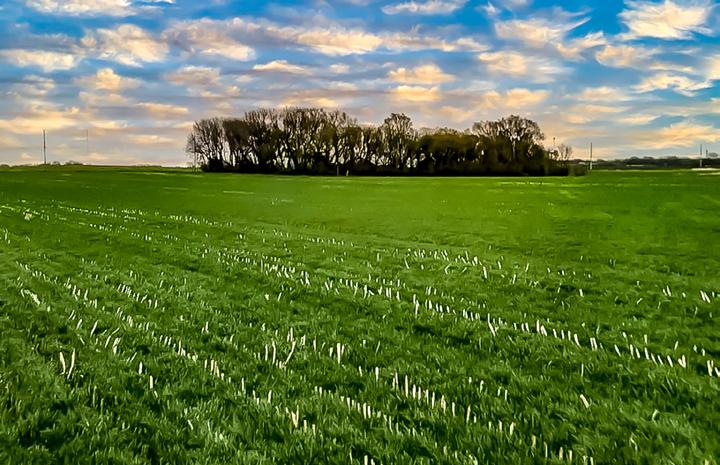





Author and speaker Bryan Kramer defines a “shared experience” as seeing, hearing, or doing the same thing as someone else. Although it's a simple concept, Kramer says shared experiences have a deep impact on human socialization because they enhance each person's individual experience. In my opinion, there aren’t many national or even local shared experiences left in America today. Millions of web pages and apps and social media sites spawned in the last 30 years by the internet have shattered shared experiences that were already fragmented. Rarely do we hear or see the same things or even have a common agreement of what we all might have heard or seen.
But there is an 864-square-mile area in America where a large percentage of its 25,698 residents come together for a shared experience. Every year, during the best five days of summer, most eyes and ears and noses in Plymouth County, Iowa, are focused on a neighborhood on the northeastern side of Le Mars. Some like cheesecake on a stick and some don’t; some like a spin on the Tilt-a-Whirl and some don’t; some like a cornhole tournament and some don’t; and only a few like the smell of goats.



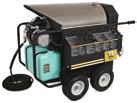

However, there does seem to be universal agreement from Akron to Kingsley, from Hinton to Remsen and all points in between that the Plymouth County Fair is the best place to be for five days in July.

The Plymouth County Fair offers a shared experience of fun things to see, do and eat. It offers the shared experience of meeting old friends and new. It offers a shared experience of friendly competition wrapped in life lessons. It offers the shared experience of everyone in the county smiling a big smile with no thought given to a person’s background, color, station in life, or political persuasion.
Enjoy a small sample of the 2023 Plymouth County Fair with these photos from my favorite part of the fair – watching youth exhibit livestock.
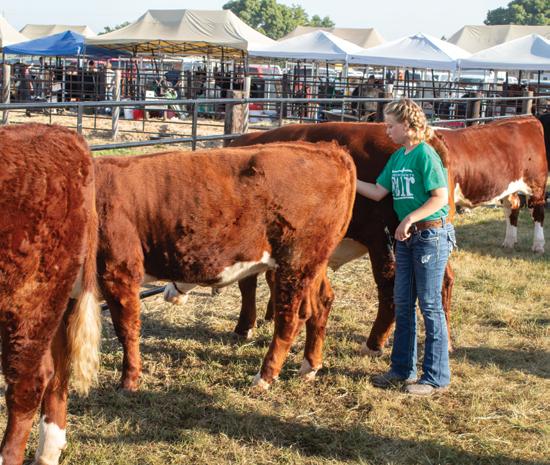
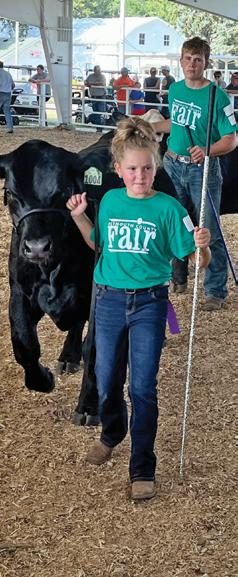
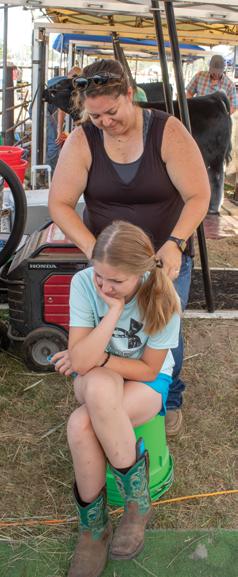
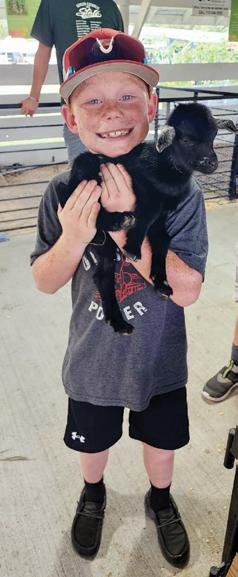














HYDROGEN

It is the gasses that destroy the steel and concrete, and cause explosions in your buildings!! Gasses also cause coughing in hogs and workers! QUESTIONS?




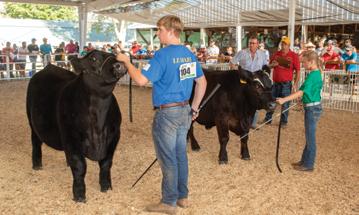
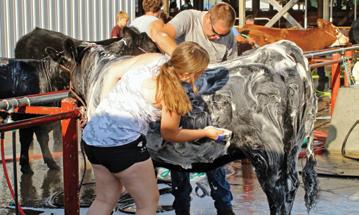
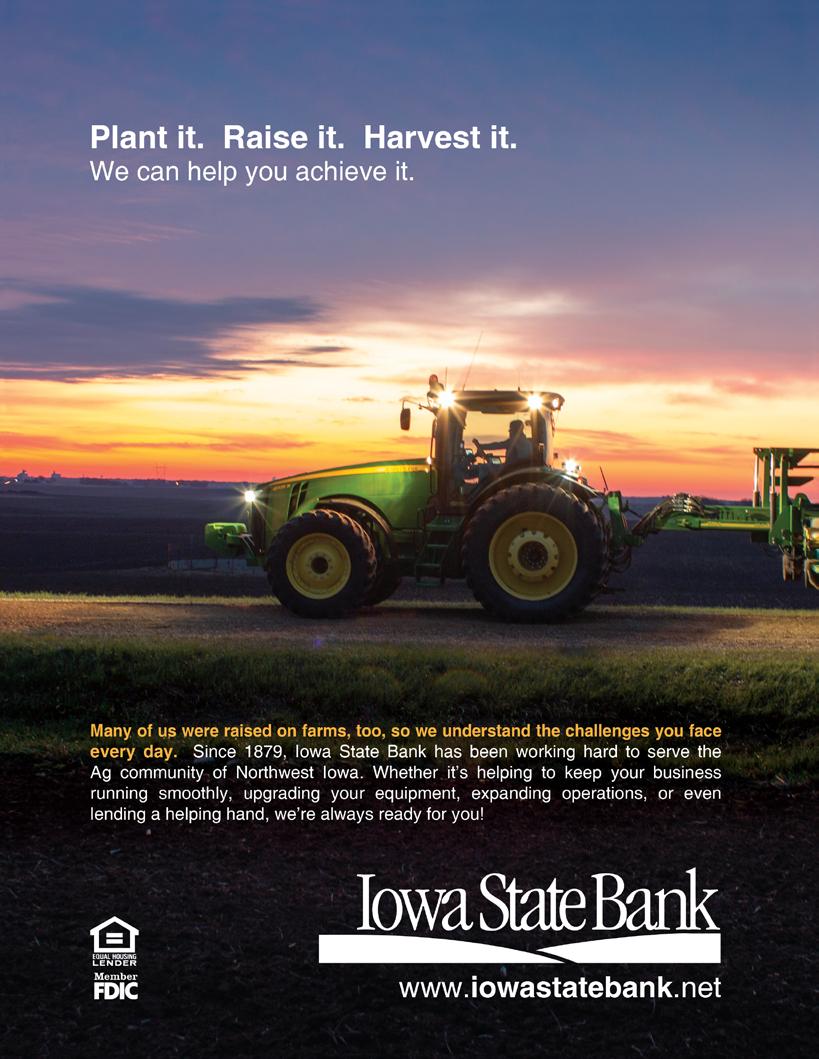
FROM THE KITCHEN
From the Iowa Turkey Federation
EACH TACO CONTAINS:
1 purchased taco shell (or prepare your own from scratch)
1/3 cup seasoned cooked turkey
1/4 cup veggie slaw
1/8 cup mango salsa (we prefer Cucina & Amore, Piquillo Pepper & Mango Salsa)
Place two turkey tenderloins in a skillet with a lid. Cover with water and simmer over medium heat. Cover with the lid and continue to cook until turkey is no longer pink (10 to 12 minutes and reaches 165 degrees). Remove from the pan and place on a cutting board to cool for 10-15 minutes. Shred with 2 forks and place back in the skillet. Season with your favorite taco seasoning mix. Heat until warm.
2 cups coleslaw mix
1 Tbls chopped sweet white onion
1 Tbls chopped red pepper
1/2 stalk chopped celery
1 chopped radish
1/2 cup milk
1/2 cup salad dressing
1 Tbls white vinegar
1 Tbls sugar
Black pepper & salt to flavor
8" flour tortillas
*If desired, add a finely minced jalapeno
SEMI and AG TIRES (new and used) MOBILE TIRE REPAIR AND SERVICE

712-753-4800
2403 US Highway 18 Inwood IA 51240


www.oak-street-station.com
Heat about 1 inch of oil in a heavy skillet with tall sides over medium to medium-high heat for 10-15 minutes until it reaches 365 degrees F.
Fry one tortilla at a time in the oil. Place tortilla flat on the oil and fry for about 15 seconds. Flip tortilla over and use tongs to squeeze the sides together to form a taco. Hold in the oil for another 15 seconds until lightly browned and crisp. Set on a paper towel to absorb excess oil. Sprinkle with salt. Enjoy these immediately while they are crispy, otherwise they tend to become chewy.














